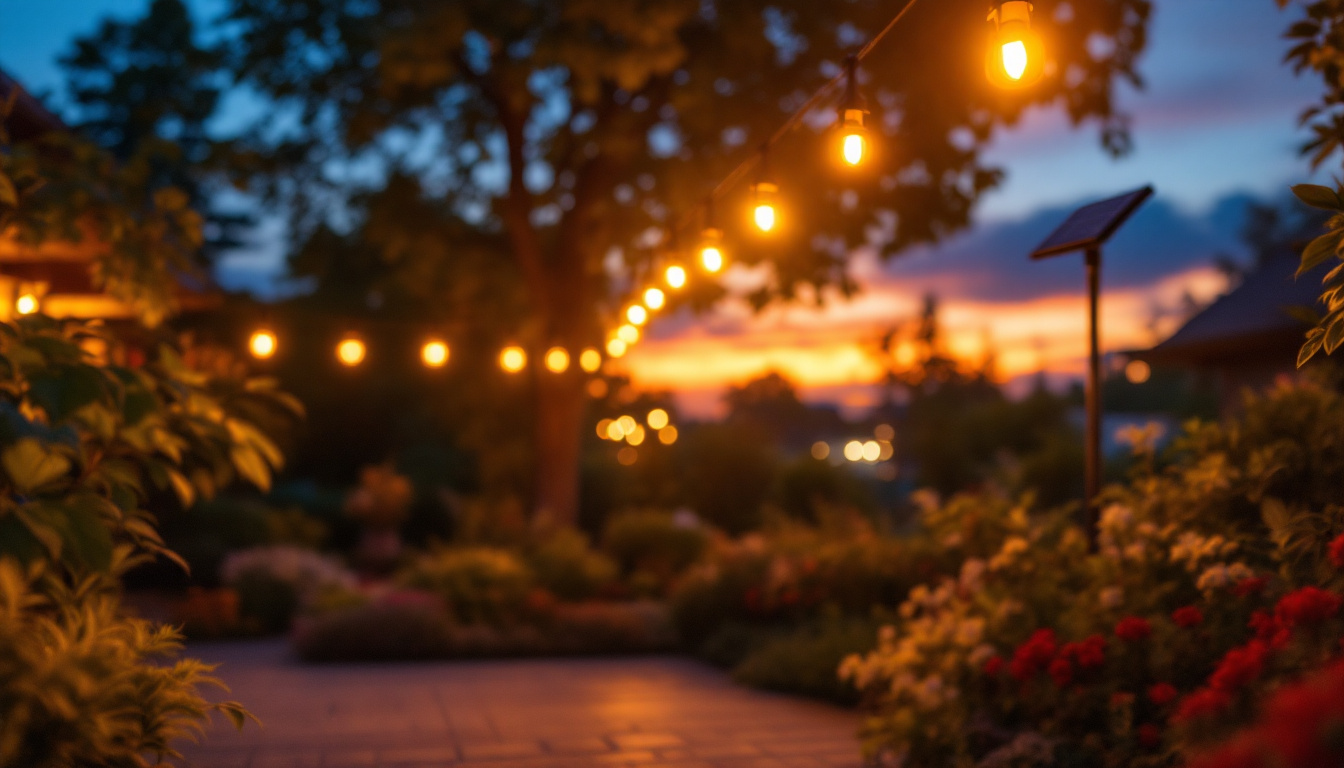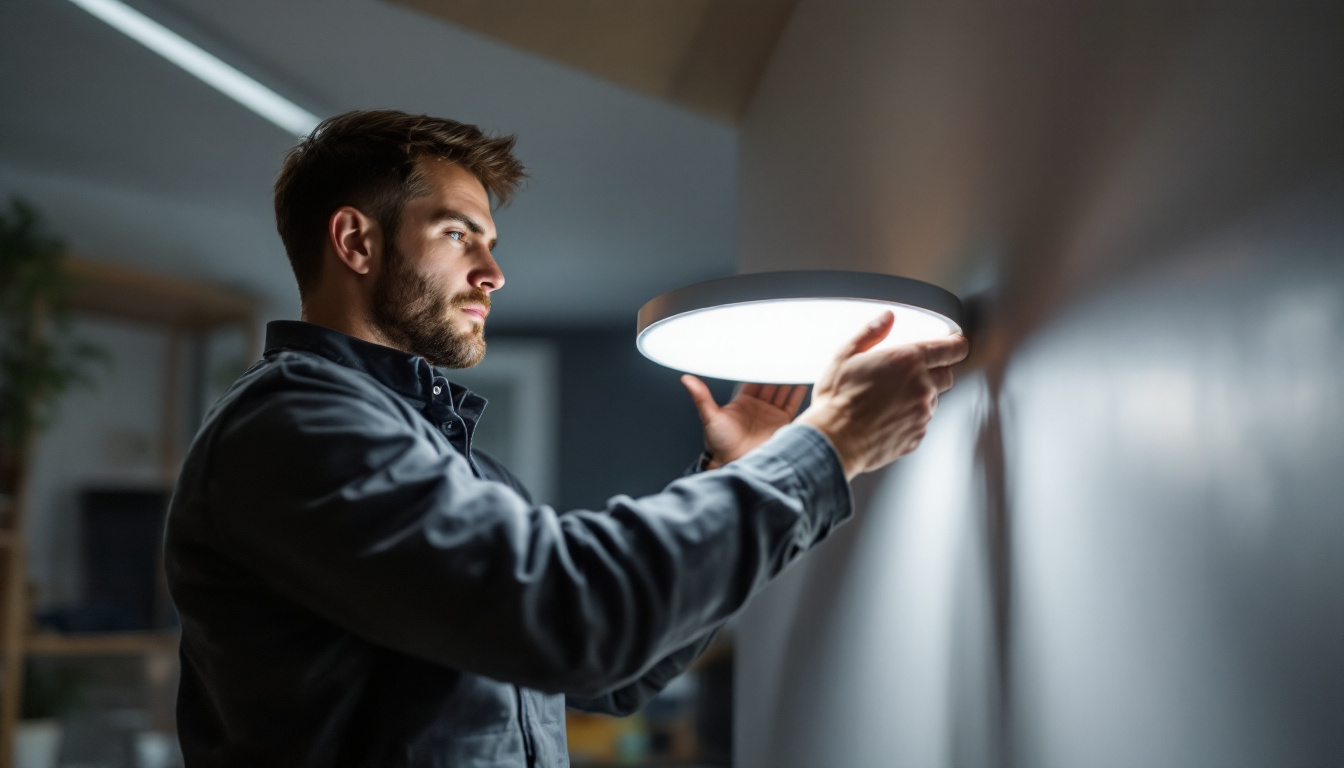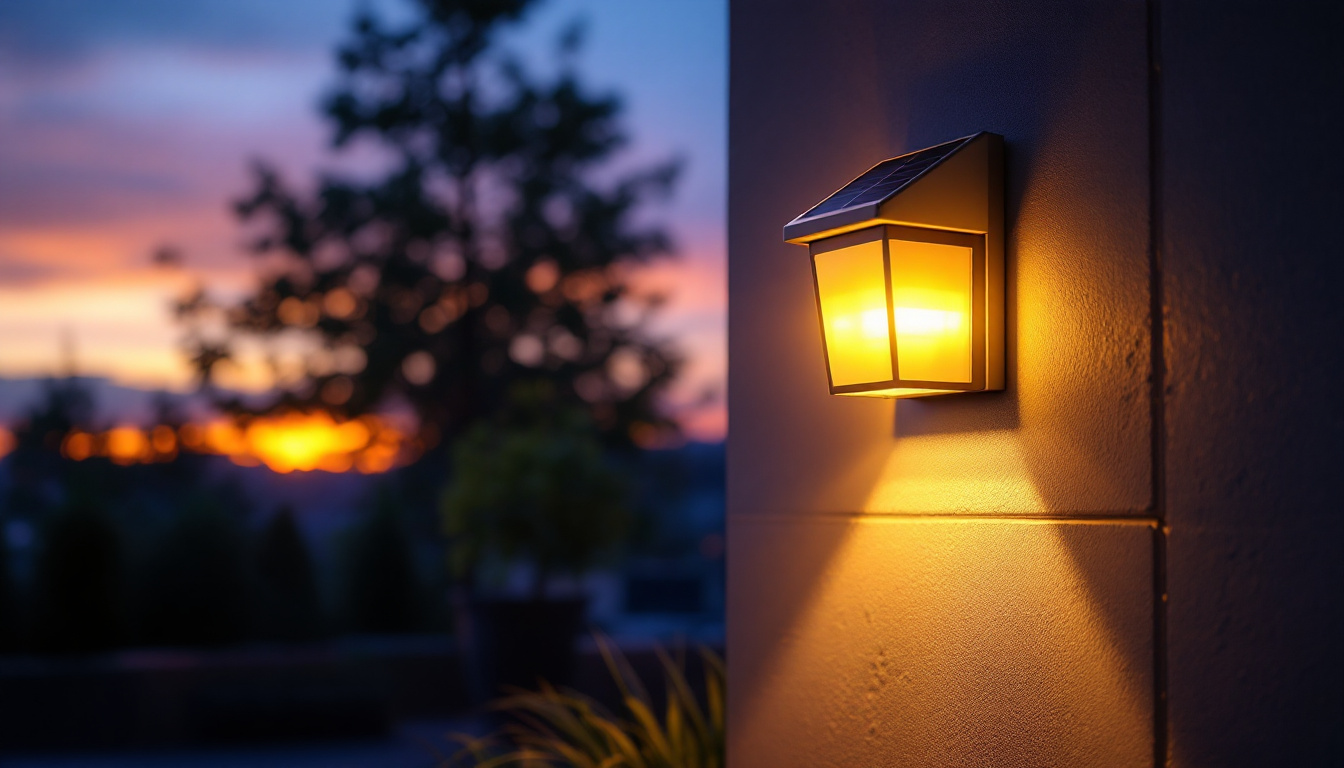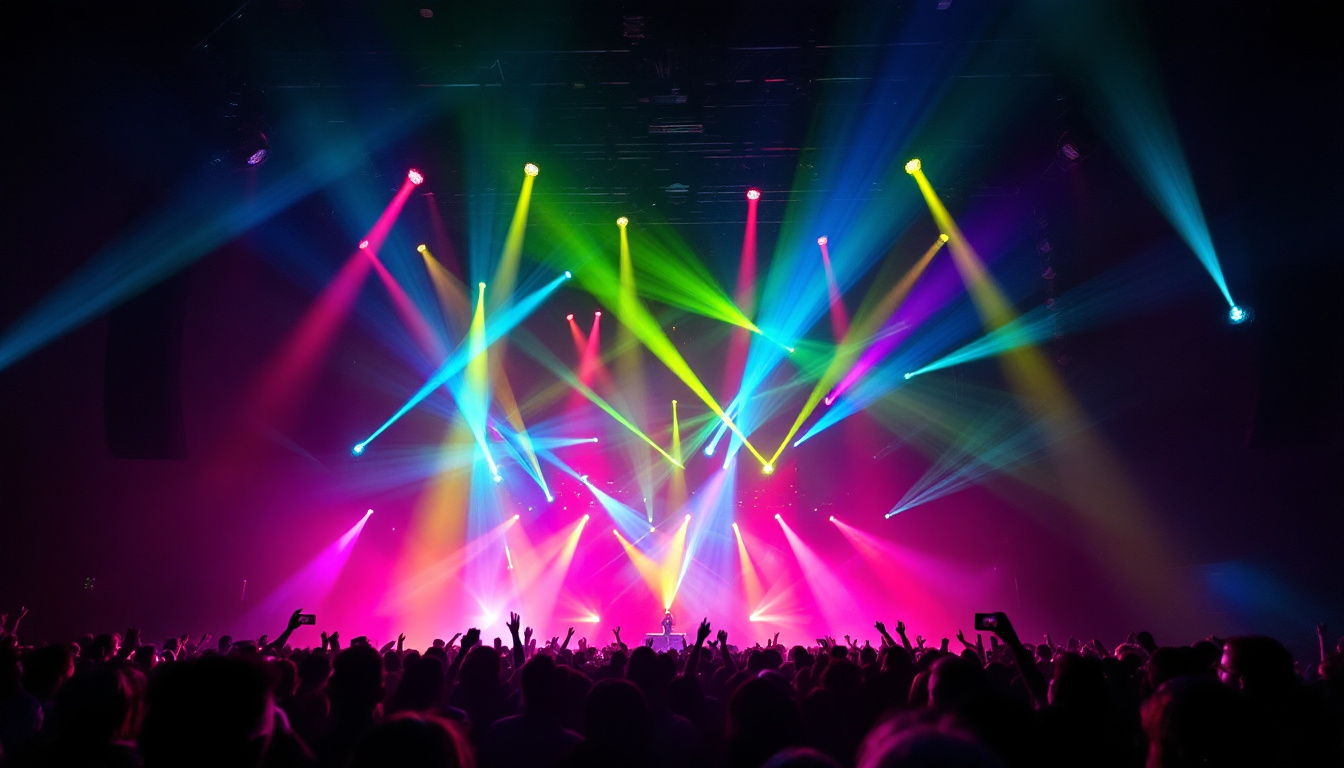
In the realm of lighting design, stairwells often represent an underappreciated opportunity for contractors to showcase their expertise and creativity. The right light fixtures not only enhance safety but also elevate the aesthetic appeal of a space. As a lighting contractor, understanding the nuances of stairwell lighting can provide a competitive edge in a crowded market. This article delves into the importance of stairwell lighting, the various types of fixtures available, and best practices for installation and design.
Stairwells are critical transition areas in both residential and commercial buildings. They serve as conduits between different levels, making effective lighting essential for safety and functionality. Poorly lit stairwells can lead to accidents, while well-lit spaces promote a sense of security and comfort.
One of the primary functions of stairwell lighting is to ensure safety. Adequate illumination helps prevent slips, trips, and falls, which are common hazards in poorly lit areas. Moreover, well-lit stairwells deter criminal activity, as they eliminate hiding spots and increase visibility. lighting contractors must prioritize safety when selecting fixtures and designing layouts. In addition to traditional overhead lights, incorporating motion sensors can enhance safety by ensuring that lights are activated as individuals approach, providing immediate illumination and further reducing the risk of accidents.
Beyond safety, stairwell lighting plays a significant role in enhancing the overall aesthetic of a building. Thoughtfully designed lighting can transform a mundane stairwell into a striking architectural feature. By utilizing various light fixtures, colors, and intensities, contractors can create an inviting atmosphere that complements the building’s design. For instance, the use of LED strip lighting along the edges of steps or walls can add a modern touch while also serving a functional purpose. Additionally, incorporating dimmable lights allows for flexibility in ambiance, enabling the space to adapt to different uses or times of day, from bright and energetic during peak hours to softer, more subdued lighting in the evening.
In today’s environmentally conscious world, energy efficiency is another vital aspect of stairwell lighting. Utilizing energy-efficient LED fixtures not only reduces electricity consumption but also lowers maintenance costs due to their long lifespan. Furthermore, integrating smart lighting systems that adjust based on natural light levels or occupancy can significantly enhance energy savings. These systems can be programmed to dim or turn off lights in unoccupied stairwells, ensuring that energy is used judiciously while maintaining safety and visibility when needed.
Choosing the right type of light fixture is crucial for achieving both safety and aesthetic goals. Different types of fixtures can be employed depending on the specific needs of the stairwell and the overall design vision.
Wall sconces are a popular choice for stairwell lighting due to their versatility and ability to save space. They can be installed at various heights to provide even illumination along the stairway. Sconces come in a variety of styles, from modern to traditional, allowing contractors to match the fixture to the building’s decor. Additionally, many wall sconces are designed to direct light both upwards and downwards, creating a warm and inviting ambiance while enhancing visibility. This dual-directional lighting can also help to reduce shadows, making the stairwell safer for users, especially during evening hours.
Recessed lighting offers a sleek and unobtrusive option for stairwell illumination. These fixtures are installed within the ceiling, providing a clean look while effectively lighting the space. When positioned correctly, recessed lights can highlight architectural features and create a sense of depth in the stairwell. Moreover, adjustable recessed lights can be angled to focus on specific areas, such as artwork or decorative elements, adding an artistic flair to the stairwell. The use of dimmable recessed lighting can also allow for flexibility in brightness, enabling the space to be tailored for different occasions, whether it be a casual gathering or a more formal event.
Pendant lights can add a dramatic touch to stairwells, especially in larger spaces with high ceilings. They provide focused lighting and can serve as a focal point in the design. When selecting pendant fixtures, it’s essential to consider the height and spacing to ensure they do not obstruct movement. In addition to their functional benefits, pendant lights come in an array of designs, materials, and colors, allowing homeowners to express their personal style. For instance, a cluster of small pendants can create a stunning visual effect, while oversized pendants can make a bold statement. Furthermore, incorporating energy-efficient LED bulbs in pendant fixtures can enhance sustainability without sacrificing style, making them an excellent choice for modern stairwell designs.
Designing effective stairwell lighting requires careful consideration of various factors, including fixture placement, light intensity, and energy efficiency. By adhering to best practices, lighting contractors can create functional and aesthetically pleasing stairwell environments.
The placement of light fixtures is critical in achieving uniform illumination. Fixtures should be installed at regular intervals to avoid dark spots, especially in areas where visibility is essential. Additionally, placing lights at the top and bottom of the stairwell can help guide users safely through the space.
Choosing the right light intensity and color temperature is vital for creating a welcoming atmosphere. A warm color temperature (around 2700K to 3000K) can make a stairwell feel more inviting, while cooler temperatures (4000K and above) may be more appropriate for modern or industrial designs. Contractors should consider the purpose of the stairwell and the overall ambiance they wish to create.
With the growing emphasis on sustainability, energy-efficient lighting solutions are becoming increasingly important. LED fixtures are an excellent choice for stairwell lighting due to their longevity and low energy consumption. Additionally, incorporating motion sensors can further enhance energy efficiency by ensuring lights are only on when needed.
Lighting contractors must also be aware of the various regulations and codes that govern stairwell lighting. Compliance with these standards is crucial for ensuring safety and avoiding potential liabilities.
Different regions have specific building codes that dictate the minimum lighting levels required in stairwells. These codes often outline the necessary foot-candles of illumination, fixture spacing, and emergency lighting requirements. Familiarity with local codes is essential for contractors to ensure compliance and protect their clients.
Accessibility standards, such as the Americans with Disabilities Act (ADA), also impact stairwell lighting design. These guidelines emphasize the need for adequate lighting to ensure that all individuals, including those with visual impairments, can navigate stairwells safely. Contractors must consider these standards when designing lighting solutions.
As technology advances, new lighting solutions are emerging that can enhance stairwell design. Lighting contractors should stay informed about these innovations to remain competitive in the market.
Smart lighting systems offer contractors the ability to create dynamic lighting environments. These systems can be programmed to adjust brightness based on time of day or occupancy, providing both convenience and energy savings. Integrating smart technology into stairwell lighting can significantly enhance user experience.
Dynamic color lighting allows for the customization of stairwell illumination, enabling contractors to create unique atmospheres. By using RGB (red, green, blue) LED fixtures, contractors can change the color of the lights to match events, seasons, or moods, adding an exciting element to stairwell design.
Examining successful stairwell lighting projects can provide valuable insights and inspiration for lighting contractors. These case studies highlight the importance of thoughtful design and execution.
In residential settings, stairwell lighting can transform a home’s entryway. A recent project involved the installation of wall sconces and recessed lighting in a modern home. The combination of warm LED lights and strategically placed fixtures created a welcoming atmosphere while ensuring safety. The homeowners reported increased satisfaction with their space, showcasing the impact of effective lighting design.
In a commercial setting, a lighting contractor was tasked with redesigning the stairwell of a corporate office building. By incorporating pendant lights and motion sensors, the contractor created a well-lit environment that enhanced employee safety and comfort. The project not only met regulatory requirements but also improved the overall aesthetic of the office, demonstrating the value of professional lighting design.
For lighting contractors, effectively marketing stairwell lighting services can set them apart from the competition. A strategic approach can attract clients and showcase expertise in this niche area.
Creating a portfolio that highlights previous stairwell lighting projects can be an effective marketing tool. High-quality images and detailed descriptions can demonstrate the contractor’s design capabilities and understanding of lighting principles. Sharing these projects on social media platforms and professional websites can attract potential clients.
Providing educational content, such as blog posts or videos, can position contractors as industry experts. Topics could include the importance of stairwell lighting, design tips, or the latest trends in lighting technology. By sharing knowledge, contractors can build trust with clients and enhance their professional reputation.
Stairwell lighting is an essential aspect of any building’s design, offering both safety and aesthetic benefits. For lighting contractors, understanding the various types of fixtures, best practices for installation, and innovative solutions can provide a competitive edge in the market. By staying informed about regulations and effectively marketing their services, contractors can position themselves as leaders in stairwell lighting design. Ultimately, investing time and resources into mastering this niche can lead to increased client satisfaction and business growth.
Ready to give your stairwell lighting projects the competitive edge they deserve? At LumenWholesale, we provide lighting contractors with the highest quality, spec-grade lighting solutions at prices that can’t be beaten. Say goodbye to local distributor markups and hello to a vast selection of reliable, high-performance lighting that meets the most stringent industry standards. Plus, with the convenience of free shipping on bulk orders, you can enjoy premium lighting at the best value — all without hidden fees or compromises. Elevate your lighting game and experience the best in wholesale lighting with LumenWholesale.

Discover how solar panels can revolutionize your outdoor lighting setup with energy-efficient solutions.

Discover essential tips and common pitfalls for lighting contractors working with LED wafer lights.

Discover the often-overlooked aspects of solar outdoor wall-mounted lights that even seasoned lighting contractors miss.

Discover the magic behind the most beloved light fixtures in concerts.